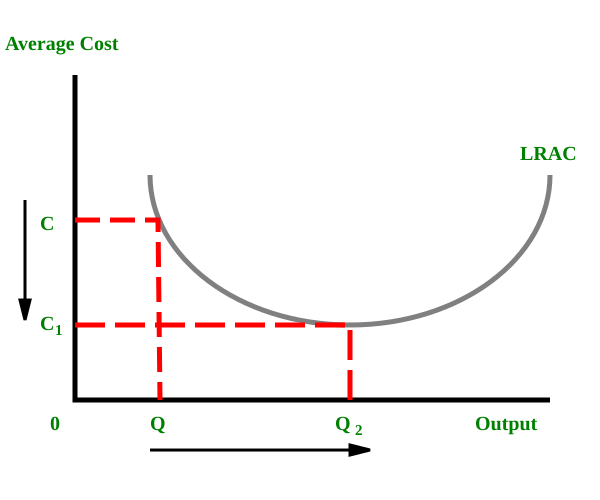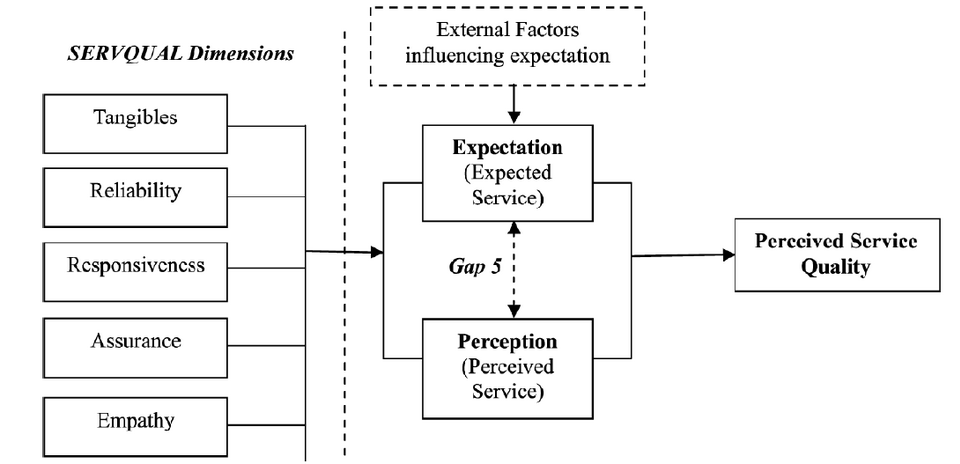AQA Specification focus:
‘That firms do not just compete on the basis of price but that competition will, for example, also lead firms to strive to improve products, reduce costs, improve the quality of the service provided.’
Introduction
Competition in markets extends beyond price, with firms increasingly focusing on quality improvement, cost reduction, and service enhancement as crucial strategies for survival and growth.
Competition Beyond Price
Price is an important element of competition, but real-world markets often show that firms compete just as much — if not more — through non-price strategies. These strategies allow firms to differentiate their products, build loyalty, and avoid destructive price wars.
Quality as a Competitive Strategy
Definition of Quality in Economics
Quality: The standard of a product or service measured by its durability, reliability, design, safety, and ability to satisfy consumer preferences.
Firms compete by enhancing product features such as design, durability, or technological integration.
Higher quality builds brand loyalty, reducing the price elasticity of demand.
For example, in monopolistic competition, product differentiation relies heavily on firms being able to claim superior quality.
Quality competition can create barriers to entry, as new firms may struggle to match established standards.
Cost Reduction as a Competitive Advantage
Cost Efficiency and Profitability
Reducing production and operational costs allows firms to maintain competitive pricing while sustaining or improving profitability.
Economies of scale: Larger firms lower average costs by spreading fixed costs over higher output.

Long-run average costs fall as output expands due to economies of scale, reaching a minimum efficient scale before potential diseconomies. The rising segment is extra detail beyond the syllabus but aids understanding. Source
Technological innovation: Automation and advanced production methods reduce variable costs.
Supply chain management: Efficient logistics and resource allocation decrease overall expenditure.
Economies of Scale: Cost advantages that a firm experiences as it increases production, leading to lower average costs per unit.
Cost reductions improve productive efficiency, defined as producing at the lowest possible cost. This is particularly relevant in competitive markets where firms face constant pressure to remain efficient.
Service Improvement as a Competitive Tool
In many industries, especially in services and retail, firms cannot rely solely on price cuts to attract consumers. Instead, they differentiate through service quality.

The SERVQUAL framework organises service quality into five dimensions: Tangibles, Reliability, Responsiveness, Assurance, and Empathy. It may reference measurement gaps beyond the syllabus, but the five labelled dimensions are key. Source
Faster delivery times.
Extended customer support.
Loyalty programmes and after-sales service.
Better user experiences, including digital platforms and mobile apps.
By offering superior service, firms increase consumer satisfaction, which can reduce customer turnover and improve long-run profitability.
Interaction Between Quality, Cost, and Service
Although distinct, these three areas are interlinked in competitive processes:
Investments in quality may initially increase costs, but if successful, they enable higher pricing or secure larger market share.
Cost reductions achieved through efficiency gains can be reinvested in service improvement or quality innovation.
Service improvements can create perceived quality differences, allowing firms to justify higher prices despite similar production costs.
Non-Price Competition Across Market Structures
Perfect Competition
Firms have little scope beyond price, as products are homogeneous.
Non-price competition is limited, though some firms may attempt minor differentiation.
Monopolistic Competition
Product differentiation is central, with quality and service being key tools.
Non-price strategies reduce the elasticity of demand for individual firms.
Oligopoly
Firms engage heavily in non-price rivalry to avoid price wars.
Quality innovation, service differentiation, and cost efficiencies are major competitive strategies.
Monopoly
A monopolist may have less incentive to improve quality or service due to lack of competition.
However, in contestable markets, potential competition can push monopolists to adopt non-price strategies to deter entry.
Efficiency and Non-Price Competition
Static Efficiency vs Dynamic Efficiency
Static efficiency involves efficiency at a given point in time (productive and allocative efficiency).
Dynamic efficiency arises from innovation and investment in the long run.
Non-price competition drives dynamic efficiency by incentivising firms to innovate in products, services, and production methods.
Dynamic Efficiency: Efficiency that focuses on improving products and processes over time through innovation, research, and investment.
Firms pursuing long-term service improvements and quality innovation enhance overall consumer welfare and the allocation of resources.
Consumer and Producer Impacts
For Consumers
Positive impacts: Higher quality, better services, more innovative products, increased satisfaction.
Negative impacts: Potentially higher prices if improvements raise costs.
For Producers
Positive impacts: Stronger brand reputation, reduced demand elasticity, greater market power.
Negative impacts: High investment costs and risk of failure in innovation.
Summary of Key Points
Firms do not compete solely on price; they also focus on quality, cost reduction, and service improvement.
These strategies enhance consumer loyalty, improve efficiency, and encourage innovation.
Non-price competition plays a central role in monopolistic competition and oligopoly, while its role is limited in perfect competition.
The drive for non-price competition contributes significantly to dynamic efficiency and long-run welfare improvements.
FAQ
Non-price competition expands consumer choice as firms continually introduce new product features, service enhancements, or quality improvements. Over time, this leads to a wider range of differentiated goods available in the market.
By increasing variety, consumers are less restricted to homogeneous products and can select based on personal preferences beyond price. This fosters stronger brand loyalty and raises consumer expectations.
In sectors like airlines, retail, or hospitality, service quality often matters more to consumers than small price differences. Faster delivery, personalisation, and customer support can build loyalty that is difficult to erode with price cuts.
Service improvements can also create barriers to switching, as customers value convenience and reliability. This gives firms a competitive edge without undermining profitability through constant price wars.
Branding is a key tool for signalling quality and service differentiation. A strong brand helps firms communicate product reliability, innovation, and customer care.
It reduces perceived risk for consumers.
It allows firms to command higher prices.
It supports long-term loyalty, making demand less price sensitive.
By investing in branding, firms can sustain non-price competition and maintain a distinct market position.
Savings from cost reductions can be reinvested into areas that drive innovation, such as research and development, new technology, or service infrastructure.
This reinvestment fuels dynamic efficiency, enabling firms to keep improving products and processes. In the long run, the cycle of cost saving and reinvestment strengthens competitiveness and supports growth in market share.
Pursuing quality improvements often raises production costs, which can backfire if consumers are unwilling to pay higher prices.
Other risks include:
Overcomplicating products, making them less user-friendly.
Misjudging consumer preferences and investing in unwanted features.
Allowing rivals to undercut on price if differentiation fails.
Thus, while quality is valuable, firms must balance it with affordability and consumer demand.
Practice Questions
Define the term dynamic efficiency and explain why it is relevant to non-price competition. (2 marks)
1 mark for a correct definition: dynamic efficiency occurs when firms improve products and processes over time through innovation, investment, and research.
1 mark for linking to non-price competition, e.g. service improvement, quality enhancement, or cost reduction leading to innovation.
(6 marks)
Explain how firms can compete through quality and service improvement rather than price, and analyse the potential benefits for consumers.
Up to 2 marks: Identifying ways firms improve quality (e.g. durability, design, reliability) and service (e.g. after-sales care, faster delivery, loyalty programmes).
Up to 2 marks: Explanation of how this creates product differentiation and builds brand loyalty, reducing price elasticity of demand.
Up to 2 marks: Analysis of consumer benefits such as greater choice, higher satisfaction, and better long-term value.
(Max 6 marks total; responses should show both explanation and analysis, not just description.)

